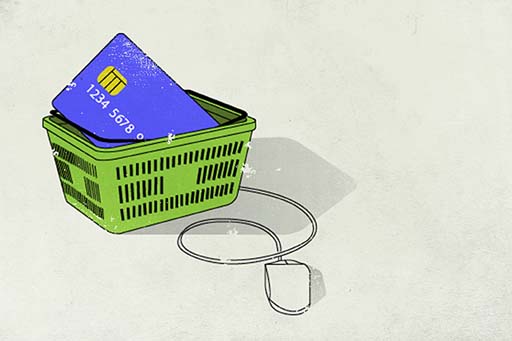3.2.2 High street shopping in your kitchen
The emergence of online shopping provides the convenience and ability to shop around in a global marketplace, allowing those consumers who have access to the internet the chance to find the best deals. A survey in 2017 found that 87% of UK consumers had bought an item online within the previous 12 months and that the UK was second only to Norway for making e-commerce purchases in Europe (gurufocus.com, 2017).
It can also be argued that the convenience of paying online can lead to spending even more. Consumers can shop around the clock without the need to leave the comfort of their own home and may be more likely to make impulse purchases. Such technological changes in the way we buy goods and services are not new, and the shift from using cash to using cheques, and then from cheques to debit/credit cards had similar effects.
The transformation that the internet is bringing to our shopping habits was vividly demonstrated by the results of the Christmas shopping period in the 2010s. The UK stores that delivered the most impressive results for sales – John Lewis, House of Fraser and Next – all have huge and highly effective internet shopping systems. Additionally those supermarkets that performed strongly over the same period tended to be those that offer a good online shopping capability.
Shopping online does expose us to the risk of being defrauded by rogue sites posing as genuine online retailers, as you will see next.

